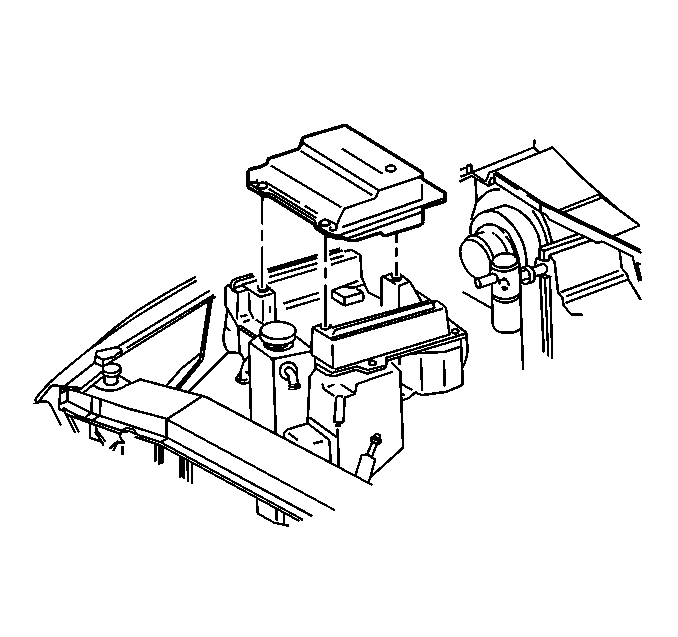Notice: In order to prevent internal damage to the PCM, the ignition must be OFF when disconnecting or reconnecting the PCM connector.
Service of the PCM should normally consist of either replacement of the PCM or EEPROM re-programming.
If the diagnostic procedures call for the PCM to be replaced, the PCM should be checked first to see if it is the correct part. DTC P0601 indicates the EEPROM programming has malfunctioned. When DTC P0601 is obtained, re-program the EEPROM.
The ignition should be OFF for at least 10 seconds before disconnecting power to the PCM so the IAC valve has time to move to the engine OFF position.
Removal Procedure
- Disconnect the negative battery cable.
- Remove the PCM retainer attaching bolts (2).
- Remove the PCM electrical connector.
- Slide the PCM and retainer from the PCM bracket
Caution: Unless directed otherwise, the ignition and start switch must be in the OFF or LOCK position, and all electrical loads must be OFF before servicing any electrical component. Disconnect the negative battery cable to prevent an electrical spark should a tool or equipment come in contact with an exposed electrical terminal. Failure to follow these precautions may result in personal injury and/or damage to the vehicle or its components.



Installation Procedure
- Remove the new PCM from the packaging.
- Check the service number in order to make sure it is the same number as the defective PCM.
- Install the PCM electrical connectors.
- Slide the PCM retainer into the PCM bracket slots.
- Install the PCM retainer attaching bolts.



Tighten
Tighten the PCM retainer attaching bolts to 8-12 N·m
(6-9 lb ft)
Notice: Use the correct fastener in the correct location. Replacement fasteners must be the correct part number for that application. Fasteners requiring replacement or fasteners requiring the use of thread locking compound or sealant are identified in the service procedure. Do not use paints, lubricants, or corrosion inhibitors on fasteners or fastener joint surfaces unless specified. These coatings affect fastener torque and joint clamping force and may damage the fastener. Use the correct tightening sequence and specifications when installing fasteners in order to avoid damage to parts and systems.
